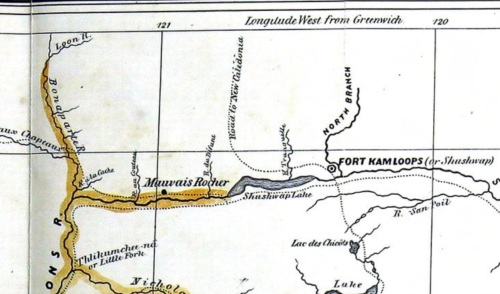
Cover, Volume 1, Number 1 (Nov. 1968) of the ASBC newsletter, soon to become The Midden.
As many readers will know, The Midden is the newsletter and journal of the Archaeological Society of B.C. The ASBC has fallen on some hard times in recent years with the Nanaimo Branch and the Vancouver Executive Branch both falling by the wayside. Luckily, the Victoria Branch, in recent years largely run by Graduate Students out of the Archaeology Lab at the University of Victoria, has retained its vitality and, after a hiatus and some thin issues, has recently started producing The Midden in its full glory again.
Even better news, the entire back run of The Midden since its first issue in 1968 is now available open access and online, with the exception that the most recent six months will be available to members only. It is to the enormous credit of the Victoria Group, who I have occasionally observed in their toils from faraway perch in Blog World Headquarters, that the ASBC and The Midden continue to express the vision of its founders over fifty years ago. The core group of the Victoria ASBC in recent years has including longtime members Pete Dady, Tom Bown and the late Gerry Merner, and more recently (and spearheading the digitization project) Jacob Earnshaw, Nicole Westre, Cal Abbott, Seonaid Duffield, and Colton Vogelaar (recent UVIC grads), and Genevieve Hill of the RBCM. Thanks also to the UVIC Library for hosting the journal. (If I’ve forgotten someone then apologies, and I will add them, just let me know). The ASBC has always been run by volunteers and has played a huge role in public education and promotion of archaeology in the Northwest, so the long-standing members and volunteers should also be thanked – of particular note perhaps, long-standing editor in the 1980s and 1990s, Kathryn Bernick.






 The Archaeological Society of BC winter lecture series kicks off this Tuesday September 27th at the University of Victoria, with a talk by Dr.Pablo Restrepo-Gautier from UVIC’s Department of Hispanic and Italian Studies. Note that the talk is in a new room compared to last year: Cornett A129 – same building but on the south side. The text of the invite is below. The talk is free and open to the public. Prior to the meeting the ASBC will hold a short AGM.
The Archaeological Society of BC winter lecture series kicks off this Tuesday September 27th at the University of Victoria, with a talk by Dr.Pablo Restrepo-Gautier from UVIC’s Department of Hispanic and Italian Studies. Note that the talk is in a new room compared to last year: Cornett A129 – same building but on the south side. The text of the invite is below. The talk is free and open to the public. Prior to the meeting the ASBC will hold a short AGM.


 The regional journal BC Studies has a
The regional journal BC Studies has a 
